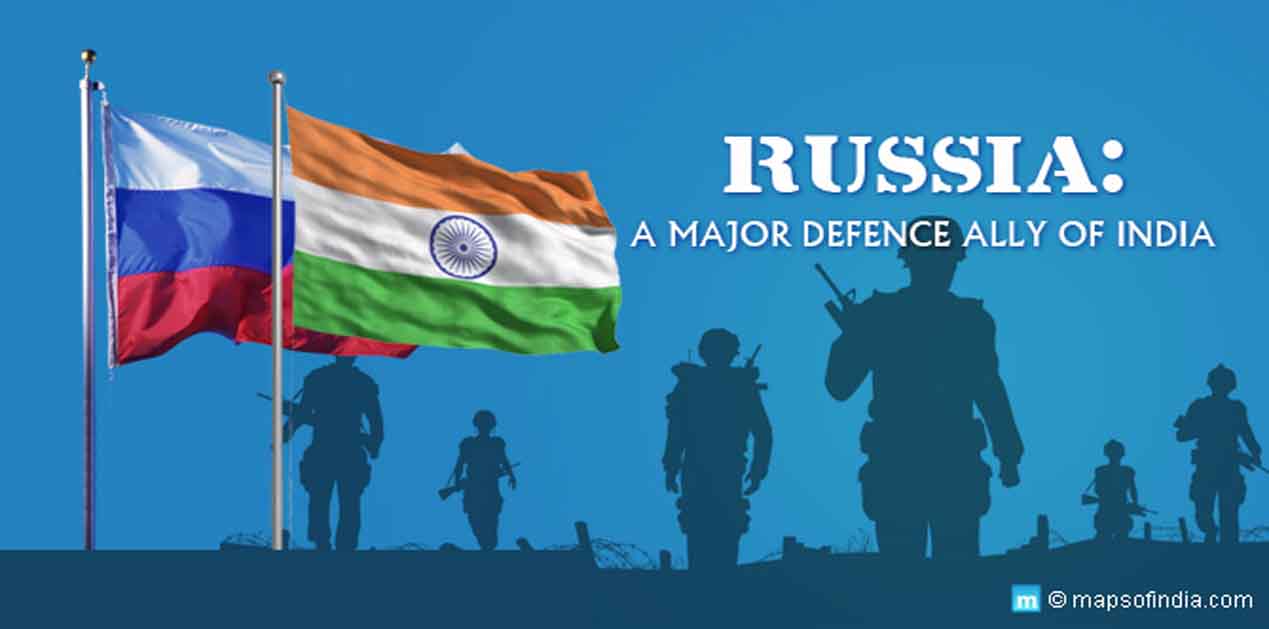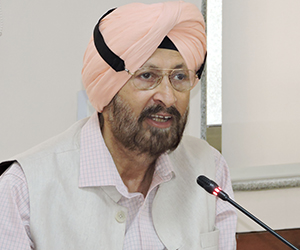The wide ranging agreements signed during President Vladimir Putin’s trip to New Delhi for the annual summit meeting with Prime Minister Narender Modi on October 4-5, 2018, and the bonhomie on display (warm hugs, long handshakes and plenty of smiles) failed to hide the fact that there has been a steady decline in the intrinsic quality of the strategic partnership between India and Russia over the last decade. Once called a “special and privileged” strategic partnership, it is now stagnating and gradually degenerating into a purely transactional relationship.
The issue of the joint development of future weapons systems provides a good example of the onset of inertia. The vision statement issued after the St Petersburg summit meeting in early June 2017 had emphasised close cooperation on this front: “We will upgrade and intensify this (military) cooperation, through joint manufacture, co-production and co-development of military hardware and military spares, with increasing reliance on the adoption and sharing of future technologies...”
Three weeks later, Defence Ministers Arun Jaitley and General Sergey Shoigu jointly chaired the 17th meeting of the India-Russia Inter-governmental Commission on Military-technical Cooperation on June 21-23, 2017, at Moscow. The two sides agreed on a roadmap and signed a protocol to take defence cooperation to a higher level through the joint development of future weapons systems and military equipment, enhanced joint training and the exchange of visits. One year later there has been little progress on these issues.
During President Putin’s trip to India in October 2018, agreements in the fields of cooperation in space, nuclear energy, infrastructure and economic development were signed. Analysts expected that India would sign agreements to acquire arms and equipment worth over $10 billion from Russia including “five S-400 Triumf advanced air defence missile systems, four Grigorivich-class frigates and 200 Kamov-226T light helicopters.” Russia was also expected to agree to lease its second nuclear-powered submarine to India after INS Chakra. However, only the deal for India to acquire five squadrons of the potent S-400 Triumf air defence system for US$5.43 billion materialised. The S-400 system is a long range air defence and anti-UAV system with limited anti-ballistic missile capability. The latter makes it a formidable force multiplier for a country with a no first use nuclear posture.
Incidentally, India has gone ahead with the purchase of S-400 despite the US threat to impose sanctions for acquiring weapons and equipment from Russia. The S-400 deal is a remarkable assertion of an independent approach to foreign policy formulation by India. The message that the country is not giving up its quest for strategic autonomy has been delivered unambiguously. However, India’s new policy to diversify its sources of defence procurement, especially its reliance on Western weapons platforms despite their greater cost, has not been received well in Russia. This is a major factor for the relationship tending to deteriorate into a transactional rather than a strategic one.
Defence Technology Cooperation
India’s acquisition of weapons and defence equipment from Russia has been the most enduring part of the India-Russia strategic partnership, which was signed in October 2000. Kanwal Sibal, former Foreign Secretary and Ambassador to Russia, has written: “Because defence supplies constitute the core of the bilateral relationship, defence transactions maintain their rhythm lest the loss of their cementing force affects the entire relationship.”
Over 60 per cent of India’s defence acquisitions are still sourced from Russia. According to a SIPRI compilation, between 2012 and 2016, 68 per cent of India’s weapons and defence equipment were imported from Russia, compared with 14 per cent from the United States and 8 per cent from Israel. Russia provided several high-tech weapons platforms to India when India was still subject to technology denial regimes. State-of-the-art fighter-bombers, including the SU-30MKI and the MiG-25 strategic reconnaissance aircraft, were sold to India. The two countries cooperated on the Russian GPS satellite system called GLONASS. The Russians had offered India the S-300/S-300V BMD system as far back as the mid-1990s.
Civil nuclear cooperation between the two countries has a long history. Russia gave India nuclear submarines on lease and provided assistance for the development of the cryogenic rocket engine for India’s GSLV (Geosynchronous Satellite Launch Vehicle). During the December 2014 summit meeting between Prime Minister Narendra Modi and President Vladimir Putin, Russia had agreed to supply 12 nuclear power reactors over the next 20 years. Russia also supports India’s quest for membership of the Nuclear Suppliers Group (NSG).
The Soviet Union sold hi-tech weapons and defence equipment to India at “friendship prices” and on the basis of barter trade as India did not have sufficient foreign exchange reserves. However, military-technical cooperation remained a buyer-seller, patron-client relationship. While fighter aircraft and tanks were manufactured under license in India, no transfer of technology (ToT) ever took place and India’s defence technology base remained low. The co-production of the BrahMos supersonic cruise missile is the only example of a successful joint venture.
The decline of Russia’s defence industry – production declined by almost 90 per cent in five years – after the collapse of the Soviet Union had an adverse impact on India’s defence procurement. India found it difficult to obtain spare parts for weapons and equipment of Soviet origin, get its equipment overhauled and seek upgrades. There were unacceptable time and cost overruns in executing pending orders. The five-year delay and the three-fold cost escalation in the acquisition of INS Vikramaditya (Admiral Gorshkov) aircraft carrier is a typical example. According to Kanwal Sibal, “serious problems such as those of inadequate product support, non-adherence to delivery schedules, cost escalation… affect combat readiness and disrupt planning, prompting calls for diversifying sources of supply. With Israel and France effectively competing and the US making steady headway, Russia’s privileged position as a supplier will be increasingly challenged.”
Some of these challenges are gradually being overcome, but the Russian defence industry has fallen behind the West in the development of cutting-edge weapons technologies. The Indian perspective for future defence technology cooperation will be shaped by Prime Minister Narendra Modi’s drive to “Make in India” with ToT. Russian original equipment manufacturers (OEM) will need to demonstrate their competitiveness and enter into strategic partnerships by way of joint ventures (JVs) with Indian public and private sector companies to bid for future contracts in keeping with the Defence Procurement Procedure (DPP) 2016. If they are nimble enough to rival the MNCs, India-Russia military-technical cooperation will have a bright future.
Other facets of defence cooperation between the two countries have included joint military exercises that are held annually. In November 2017, a tri-Service joint exercise was held at the battalion level near Vladivostok and in the Sea of Japan. Approximately 900 Indian military personnel, two surface warships and two IL-76 aircraft participated. Similar exercises have been planned for the future.
Putin’s Russia has begun to gradually drift towards China and its ally Pakistan. Russian leaders have repeatedly assured India that the improvement in their relations with Pakistan will not have any impact on India and Russia’s “special and privileged” strategic partnership. However, many in India see a challenge in the growing China, Pakistan, Russia axis, with Iran waiting in the wings. However, due to economically weak Russia’s unstated but deeply felt apprehensions about wealthy China’s military assertiveness, the China-Russia strategic partnership will be slow to gather momentum.
(Brig Kanwal is Visiting Fellow, VIF and former Director, Centre for Land Warfare Studies (CLAWS), New Delhi)
(The paper is the author’s individual scholastic articulation. The author certifies that the article/paper is original in content, unpublished and it has not been submitted for publication/web upload elsewhere, and that the facts and figures quoted are duly referenced, as needed, and are believed to be correct). (The paper does not necessarily represent the organisational stance... More >>
Image Source: http://www.olivegreens.co.in/images/easyblog_images/194/2e1ax_polish_entry_india-russia-military-alliance.jpg










Post new comment